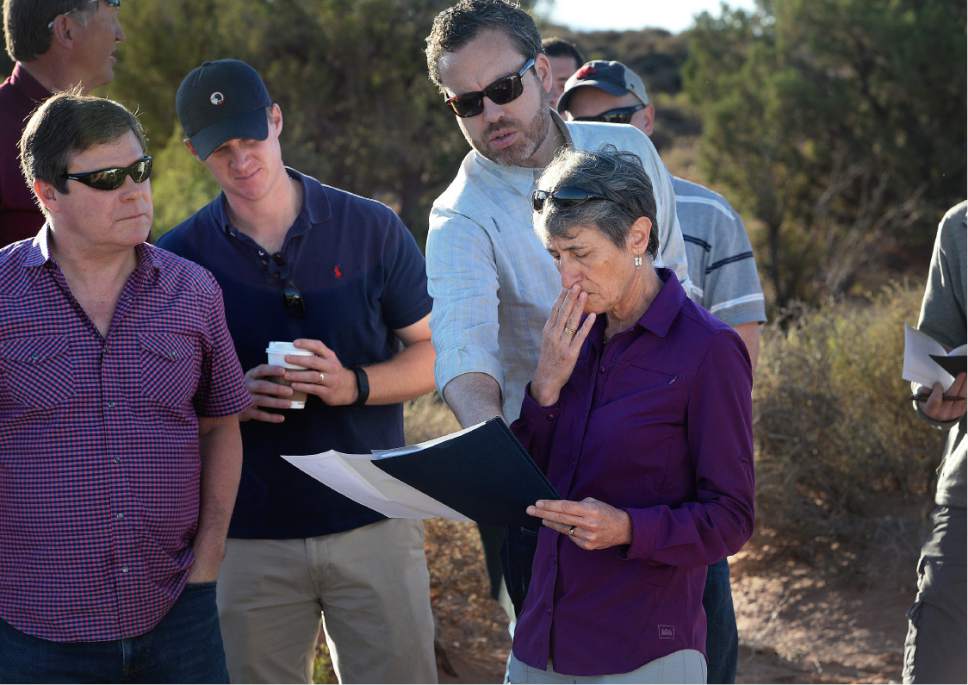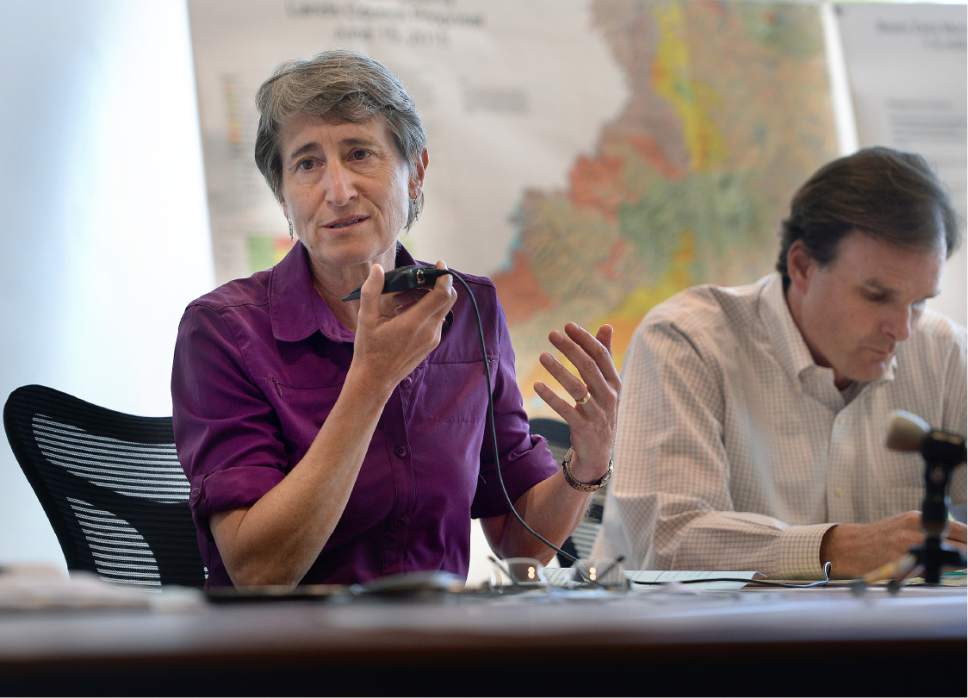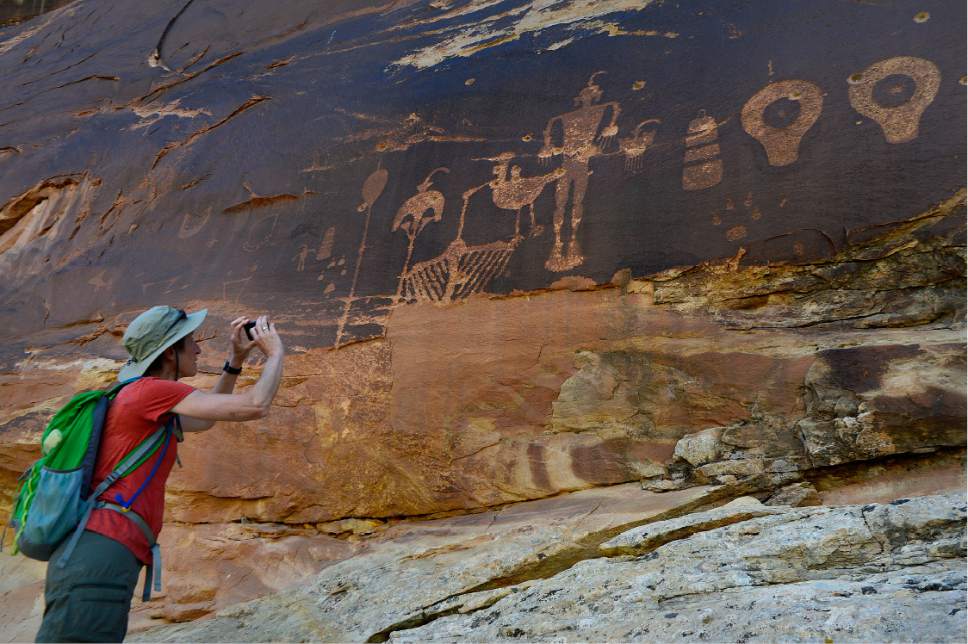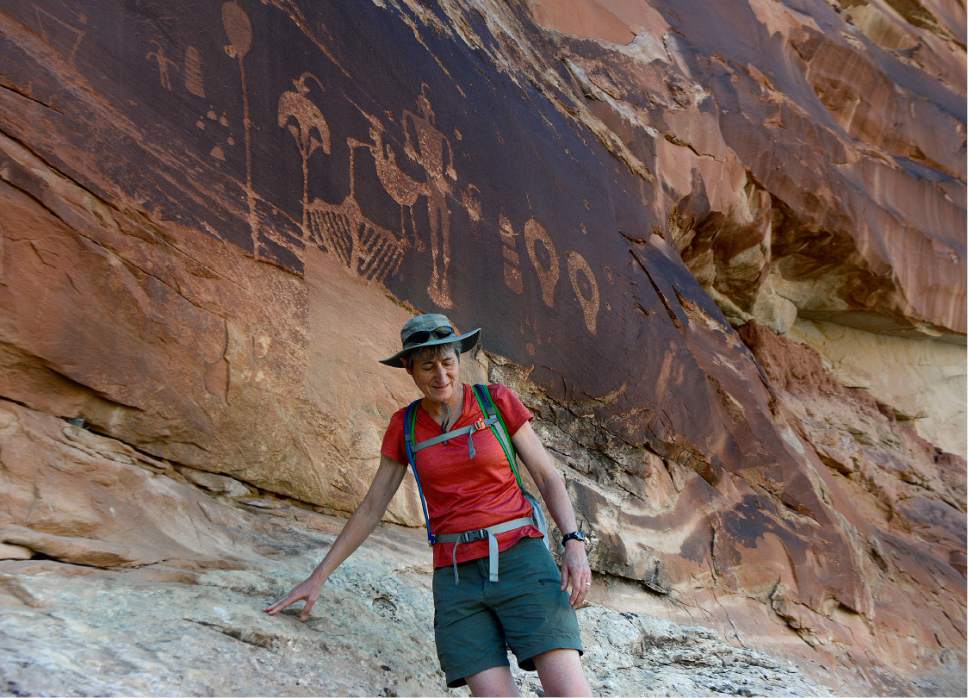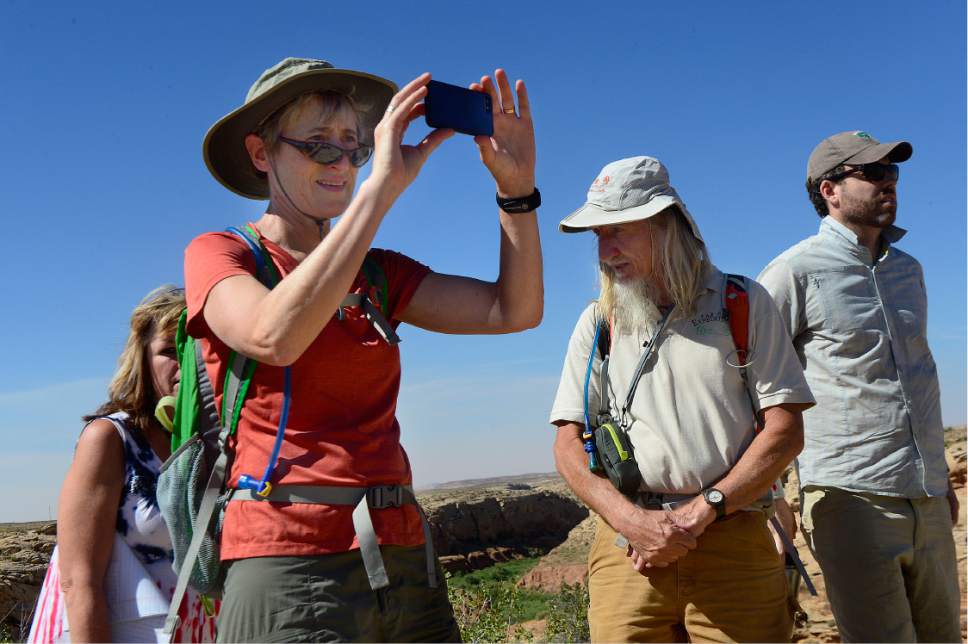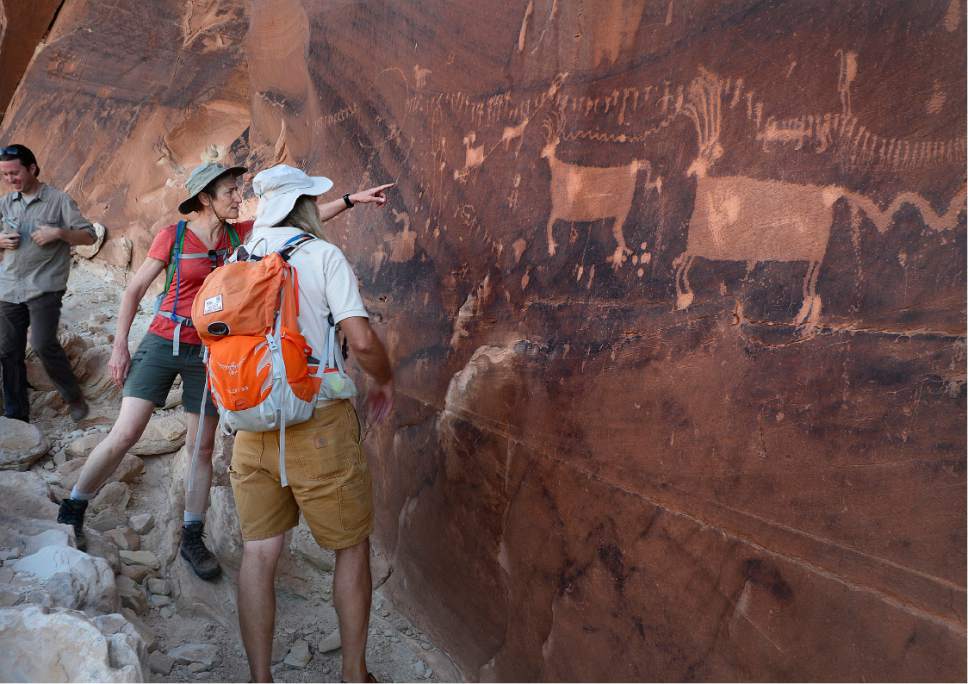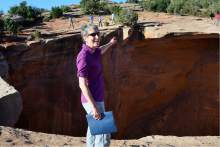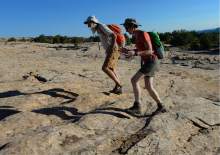This is an archived article that was published on sltrib.com in 2017, and information in the article may be outdated. It is provided only for personal research purposes and may not be reprinted.
On her journey home to Seattle from Washington, D.C., Sally Jewell spent a few weeks this spring in New Mexico, Utah and Nevada visiting some of the lands set aside as national monuments under her watch as Interior Secretary.
No monument commanded more of her attention than Utah's Bears Ears, which she had previously visited over four days last July, hearing from tribal members who supported it and local officials who opposed it. Today she stands by the 1.3-million-acre designation President Barack Obama made Dec. 28, less than a month before leaving office.
"We worked very closely with our scientists, people on the ground, people in the communities that know these landscapes well, the tribes, particularly in case of Bears Ears, that understood what's needed for hunting, gathering and traditional practices and sacred sites. Those shaped the boundaries of these monuments which were very carefully thought out," she said in an interview Tuesday with The Salt Lake Tribune.
Monument designations by Obama, along with others by Bill Clinton, will be reviewed under an executive order President Donald Trump is expected to sign Wednesday in a nod to Utah political leaders bent on seeing the Bears Ears and Grand Staircase Escalante national monuments revoked or downsized.
Jewell said Interior did everything it could to craft a monument proclamation that protected Bears Ears' cultural resources and natural treasures, while respecting the wishes of San Juan County officials.
"When you get out and look at the resource and listen to the people, including the opponents, a couple thing become clear, particularly among tribal members that were against it. They had a lot of misinformation about what they would be allowed to do. That helped us to make sure that was clarified in the proclamation. I am very confident our work will stand the test of time," Jewell said.
Shaun Chapoose, chairman of the Ute Indian Tribe Business Committee, characterized any move to revoke the monument as an attack on Indian country.
Bears Ears "was the first opportunity that American citizens had for Native American tribes, not one tribe, but five with support from other federally recognized tribes, asking to preserve and protect this land," Chapoose told reporters in a conference call. "This is troubling for all Americans. Once you destroy these types of resources, these habitats, these places that are untouched, you can never go back."
During his tenure, Obama designated or expanded some 27 monuments, none as controversial as Bears Ears. Utah political leaders ceaselessly complained it was too big, and a "midnight" designation against the wishes of locals.
"There is no question in my mind that the land that was set aside for these monuments was legitimate and appropriate in the spirit of the Antiquities Act. It's fair to say, as we have learned more about habitat and the importance of connected habitat and landscapes more broadly. The area needed to protect these resources has also expanded," Jewell said.
As for Bears Ears, Jewell said she listened to local leaders, but Obama felt compelled to act after legislative efforts to protect the region failed. The administration deliberately waited until the last minute to give Rep. Rob Bishop's Public Lands Initiative (PLI) every chance to succeed.
Bishop belatedly introduced a one-sided lands bill he must have known was doomed to failure since he nixed painstakingly negotiated compromise language, Jewell said. Yet Obama met Utah leaders halfway by delineating a monument that hewed closely to conservation areas proposed in the PLI to create a monument 550,000 acres smaller than the tribes sought.
"Every member of [Utah's] delegation and governor's office knew for years we would use the Antiquities Act by the end of the Obama administration if they were not successful getting legislation passed. None of this was a surprise," Jewell said.
Trump's executive order is expected to cover all monument designations dating back to 1996, a date calculated to capture the Grand Staircase-Escalante monument created that year by Bill Clinton. Even as that monument continues to drive economic expansion in Boulder, Kanab, Escalante and other towns rimming the 1.9-million monument, state and Kane and Garfield county officials continue to complain the monument is stifling this region's future. But Jewell says visitors are thronging to that monument, filling hotels and restaurants.
"For anyone to say that is less important to your economy than extractive industries is not paying attention to what is actually happening on the ground," Jewell said.



